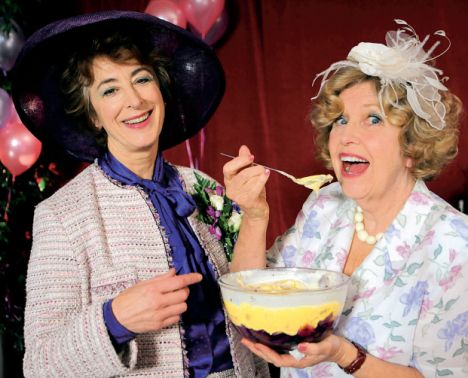The London Library in St, James Square
Aaah, the London Library. The Holy Grail of research libraries as far as most historians are concerned. The oh so hard to get into Valhalla of archives. Such is the mystique that has been built up about the Library, one is certain that access into it’s hallowed halls is as difficult to attain as a ticket to Almack’s had once been. So, when Victoria and I were in London in September over Open Houses Weekend, we put the London Library in St. James’s Square at the top of our list. This would be our chance to finally see the inside of this venerable institution. Unfortunately, we didn’t know that one had to sign up for the Library tour prior to the date, but the very nice lady at the reception desk invited us to take a seat and to wait for the next tour to start. If the anticipated numbers did not show up, we would be more than welcome to join the group.
So we waited. And we eagerly eyed all who entered. Surely, we’d see the likes of world famous historians, household name authors and mayhap an Oxford don or two. Not a bit of it – everyone who entered the Library looked quite ordinary. Many of them looked to be students. When a pair of particularly young seeming male students walked by, Victoria whispered, “How do you think they got in here?”
“Don’t know,” I whispered back. “How did any of these people get in here?”
“The entrance fee is supposed to be really expensive, and besides that, you have to provide references. What sort of references could a pair of seventeen year olds have?”
“I think you’re making it harder than it really is to get in here. I mean, we have references.”
“We do?”
“Yes,” I hissed, “of course we do. We’re both published authors, aren’t we? And we have the blog, which has been up and running on a regular basis for six years now. That should demonstrate a serious academic bent. At the very least it proves that our interest in researching 19th century Britain is more than a passing fancy.”
“I don’t know,” Victoria said, “I think you have to have like three references from people who are already members of the Library.”
“Are you sure? Maybe you’re confusing it with White’s Club.”
The next tour group began to form and, miraculously, Victoria and I both got in. Joy! I must say, we really were given a behind the scenes tour: we were shown through many of the rooms and miles of stacks. We went up floor by floor to the attics and down again to the basement, all the while being surrounded by books we longed to get our hands on. The pictures below will give you some idea of the Library’s holdings.
Upon our return to the States, I went online to seriously investigate exactly what membership in the London Library involved. Unsurprisingly, I soon got distracted – the Library has an online catalogue of its holdings called Catalyst, that will not only search for books and journals in the Library, but will also search for titles and in many cases the content of the Library’s eJournal and database collections, as well. So, again unsurprisingly, I searched for the Duke of Wellington.
And got 6,614 results.
I also found online guides to various collections: The Food and Drink Collection, A Guide to the French Collections, Guide to the Topography Collections. Many more can be found on the Library’s website.
At long last, I got around to the membership page – Individual annual memberships are £485 or forty pounds per month. Victoria was correct, you do need a reference, or Referee, but they do not necessarily have to be a Library member:
Referee: Applicants are asked to give the name of a referee, who should be someone to whom you are known personally (but not someone living at the same address) and whose position can be verified if necessary (e.g. a member of a prof
essional body, an academic, teacher, current member of the Library etc.).
And there are alternatives to an annual membership for those who are just visiting the UK, shown below. Can’t wait to let Victoria know – we actually do know several people in the UK who might vet us and we could always split the membership fees and share the online membership. Now it’s just a question of how long it will take me to get through over six thousand results for the Duke of Wellington.
Daily and Weekly Tickets
-
A limited number of temporary tickets are made available for non-members who wish to consult specific material from the Library’s collections which is not available in other publicly accessible national, specialist or public libraries
-
Daily tickets £15.00. Weekly tickets £50.00. (Cash or cheque payment only)
-
Advance booking required
-
Tickets are for reference use of the Library only
-
Applicants will need to produce two identification documents – one including a photo (eg passport, driving licence, travel card, student card, ID card) and one including confirmation of their current address (eg driving licence, recent bank statement or utility bill, official letter). Visitors to the UK are required to produce confirmation of their address while in the UK.
-
Contact
Book Enquiries in the first instance to enquire about the materials you wish to consult. Contact
Reception thereafter to make a booking
-
Temporary Overseas Visitors Membership
-
£243.00 for 4 months
-
Available for visitors from overseas with no permanent address in the United Kingdom. In addition to the subscription fee a deposit of £243.00 is payable on admission, refundable at the expiry of the membership, or earlier, provided that the membership card is surrendered and that all loans have been returned
-
















